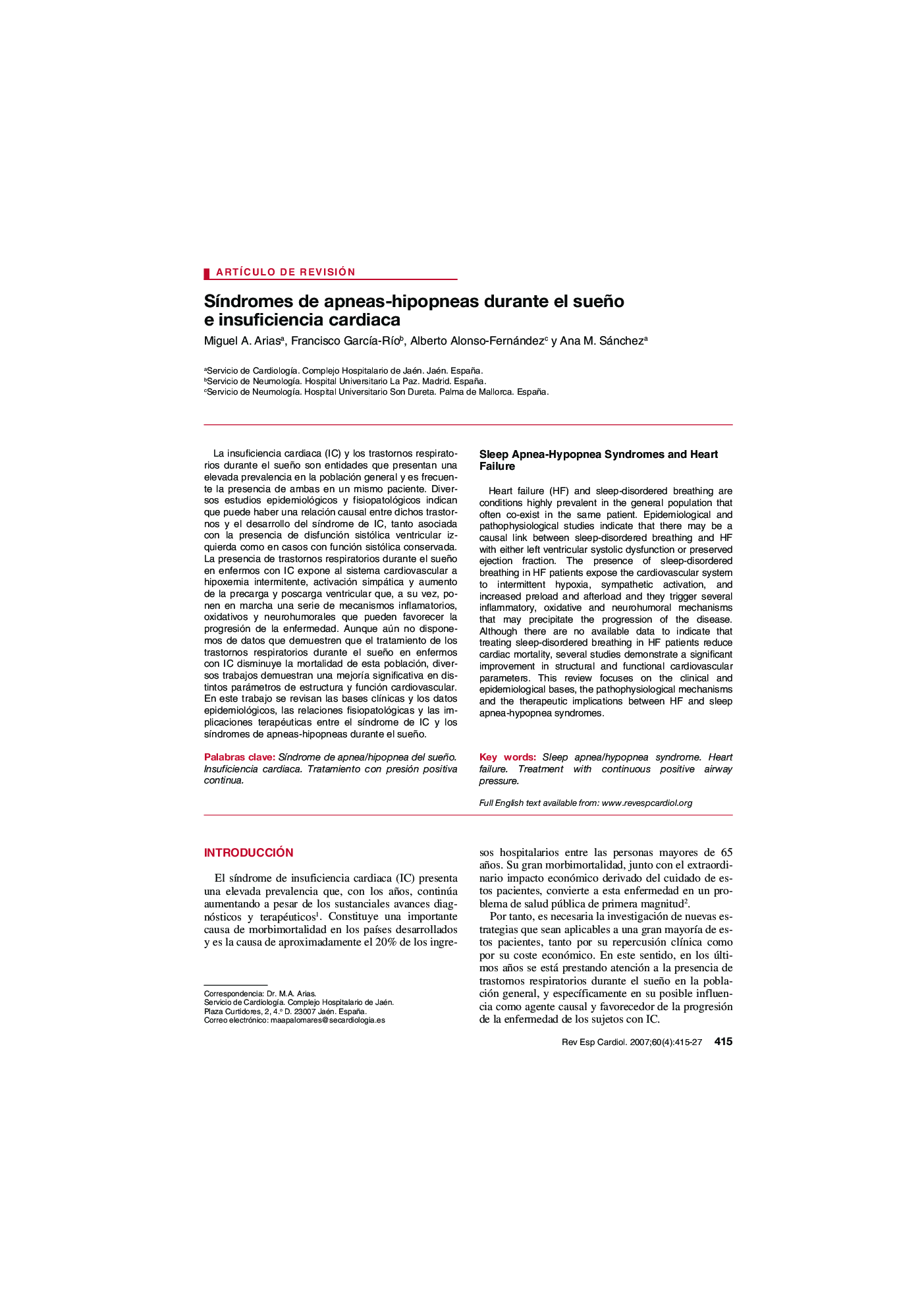| Article ID | Journal | Published Year | Pages | File Type |
|---|---|---|---|---|
| 3014948 | Revista Española de Cardiología | 2007 | 13 Pages |
Abstract
Heart failure (HF) and sleep-disordered breathing are conditions highly prevalent in the general population that often co-exist in the same patient. Epidemiological and pathophysiological studies indicate that there may be a causal link between sleep-disordered breathing and HF with either left ventricular systolic dysfunction or preserved ejection fraction. The presence of sleep-disordered breathing in HF patients expose the cardiovascular system to intermittent hypoxia, sympathetic activation, and increased preload and afterload and they trigger several inflammatory, oxidative and neurohumoral mechanisms that may precipitate the progression of the disease. Although there are no available data to indicate that treating sleep-disordered breathing in HF patients reduce cardiac mortality, several studies demonstrate a significant improvement in structural and functional cardiovascular parameters. This review focuses on the clinical and epidemiological bases, the pathophysiological mechanisms and the therapeutic implications between HF and sleep apnea-hypopnea syndromes.
Keywords
Related Topics
Health Sciences
Medicine and Dentistry
Cardiology and Cardiovascular Medicine
Authors
Miguel A. Arias, Francisco GarcÃa-RÃo, Alberto Alonso-Fernández, Ana M. Sánchez,
